Gérard Courant
CINEMATONS
October 28 – November 14, 2010
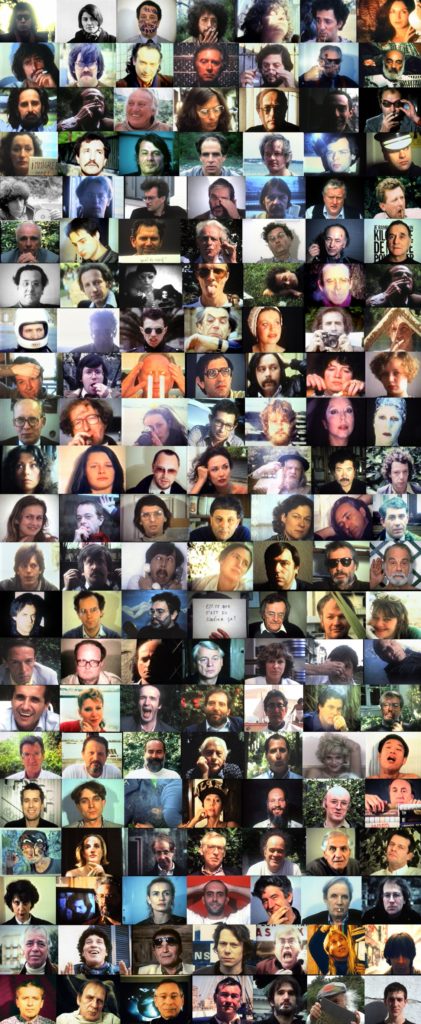
Since the 7th of February, 1978 I have made portraits on film of artistic and cultural personalities that I callCinématon. Personalities of all sorts like Jean-Luc Godard, Wim Wenders, Joseph Losey, Sandrine Bonnaire, Juliet Berto, Philippe Sollers, Fernando Arrabal, Jacques Monory, Fréderic Mitterand, Sapho, Jean-Paul Aron, Samuel Fuller, Terry Gilliam, Gabrielle Lazure, Marushka Detmers, Jack Lang, Serguei Paradjanov or Jean-Francois Lyotard have accepted to play this game.
There are ten rules for the cinematon, ten commandments that must not be deviated from :
1 ) A camera on a tripod
2 ) A camera that does not move.
3 ) A close-up of a face.
4 ) No sound
5 ) No change in focal length.
6 ) No change in the framing.
7 ) Running-time of 3 minutes and 25 seconds.
8 ) One take only.
9 ) No cutting during the shooting and no editing.
10 ) The person that is being filmed can do whatever he/she wants.
The aims of the Cinématon are multiple : the basic aim is to consitute an archive on art
and especially on the film, theater and entertainment scenes in those moments when the
subject that is being filmed proposes a great moment of truth about herself or himself.
Each Cinématon is preceded by three introductory title cards with the chronological
number of the shoooting of the portrait, the name of the person that is being filmed, his or
her nationality, his profession, the date, hour and place of the shooting.
Cinématon has theoretically no end.
Gérard Courant
MICROSCOPE Gallery is honored to exhibit for the first time in the U.S., and in its entirety, the epic CINEMATONS, a 154-hour, more than 30-year project by French film-maker and cinephile Gérard Courant. An adventure begun in 1978 and running through October of this year, CINEMATONS is the longest film in history and features 4-minute silent portraits of the artists, directors and others who devote themselves to the art of cinema from renowned Hollywood director’s to the avant-garde including: Jean-Luc Godard, Sergueï Paradjanov, Wim Wenders, Félix Guattari,Terry Gilliam, Samuel Fuller, Joseph Losey, Jonas Mekas, Peter Kubelka, Pedro Costa, John Giorno, Derek Jarman, Philippe Garrel, Lou Castel, Jean-Marie Straub, Danièle Huillet, Olivier Assayas, Ben Vautier, Robert Kramer, Michael Snow, Mike Kuchar, Jean-Jacques Lebel, Manoel De Oliveira, Raul Rouiz, Marco Bellocchio, Mario Monicelli, Ken Loach, Joseph Morder, Boris Lehman, Dominique Noguez, Jackie Raynal, Paul Sharits.
A propos, eminent philosopher Michel Foucault wrote: “It would be a mistake to think that Cinématon has to do with sadism or fetishism. There is no sadistic or masochist kind of link between the people that are filmed and the person that films them. It’s rather a sort of suffering-pleasure. Pleasure to be in front of the camera. Suffering because you have to stay there. You could even argue that this suffering and this pleasure are inseparable, that they are not two qualities that complete each other but rather one and the same quality. This is of course wanted by those who agree to submit to the rules of Cinématon. The simple fact of agreeing to this game implies a certain will to chain yourself to the camera and, when the film is being shot, a desire to liberate yourself, to go, to abandon everything and say: Stop!”.
A multi award-winning project, shot mostly in Super8 and continued later on in video, CINEMATONS is more than the longest film of the human history, it is the revolutionary, silent song of the ones who live for their passions.
We will extend our hours to project the entire work over 17 consecutive days, 9 hours a day from October 28 to November 14. Other works by Courant will also be on display.
.
CINEMATONS
SCHEDULE
October 29th – November 14th
GERARD COURANT
BIOGRAPHY
by Film Critic & Journalist Raphaël Bassan, for Encylopaedia Universalis 2005
Gérard Courant is likely the most radical figure of conceptual cinema in France. An important section of his filmography consists of series dealing with otherness (in places, in people) through the same aesthetic options applied to different subjects. Courant is one of the purest descendants of Lumière Brothers: every date, place and title always corresponds strictly to reality – of characters (and their functions,) of places, and the moment of shooting.
Born in Lyon, Gérard Courant moved after a few months to Valence with his parents. To this city he would dedicate one of his most remarkable late works: Inventaire filmé des rues de la croix-rousse à Lyon (Film Inventory of the Red Cross streets in Lyon, 2002). He settles in Paris in 1975. Once there, he takes part in the turbulent lifestyle of the experimental film-maker, firstly writing for the critic revue Cinéma as well as for the avant-garde journal Cinéma Différent, and later on becoming a film-maker himself.
His cinematic debut was clearly influenced by both Dada and Pop Art movements, as you can see in his short film Marilyn, Guy Lux et les Nonnes (Marilyn, Guy Lux and the Nuns, 1976).
In his first feature, Urgent ou à quoi bon exécuter des projets puisque le projet est en lui-meme une jouissance suffisante (Urgent aka why carry out any project when the project in itself offers sufficient enjoyment, 1977), he frees himself through a kind of exorcism, of integration and rejection of a particular culture and its myths, of a working method typical of the avant-garde.
All these collages of things falling, film perforations, scratching and coloring, addition of texts and music, seem to represent for him a more or less direct homage to Marcel Duchamp and the spirit he was driven by throughout his life.
Thus, Courant doesn’t find his way through the use of found footage – as in the case of the Lettrists – but within the serial cinema partly inherited from Andy Warhol (The 13 most beautiful women, 1964) as well as by his attraction for the series, most present in his filmography and in his life and philosophy.
The Cinématons series began in February 1978, first on 16mm film and later with the simpler super8. Now after 32 years it includes today more than 2300 portraits. Started with avant-garde film-makers and supporter of experimental cinema – Dominique Noguez, Katerina Thomadaki, Joseph Morder, Raphael Bassan, Stéphane Marti and others – the series expands quickly to the world of cinema, art and society. So, also Jean-Luc Godard, Wim Wenders, Nagisa Oshima and Sandrine Bonnaire got to have their own Cinématon.
Since the first year of shooting, Courant has fixed the structural rules: a camera on a stand, still, a silent close-up of the face, no change of focus or framing during the 3 minutes 25 seconds, only one take, no editing. Within the frame, everyone can control his/her own image as well as choose the background.
What at the beginning seemed to be only a provocation, after more than a quarter of a century has become an essential work, impossible to stop, producing also a chain of deviations ( Couple, Trio, Portrait de Groupe, Lire, Mes Lieux d’Habitation). It is the result of a deep understanding of the notion of series – so popular among the American artists of the 60’s – an osmosis of the realm of serial music (Steven Reich, Philip Glass).
The minimal, serial aspect is coupled with a strong documentary potential: you can see how everybody reacts to these constraints. The professional actors are usually less at ease than the others, because they are used to being directed. The way of posing, dressing, behaving of people change along the years and decades, showing an interesting social and anthropologic variation.
Cinématons represent a very singular panorama on the artistic ‘milieu’ between the end of the 20th century and the beginning of the 21st, and they are at the same time a work of highly formal coherence.
A great admirer of Werner Schroeter and Philippe Garrel’s films (he wrote a book on each of them), Gérard Courant has himself realized very lyrical and hypnotic films around the presence and beauty of certain women, stars of the modern underground, in parallel with the icons of Hollywood cinema. The most ambitious example of this inspiration can be found in the tetralogy Le Jardin des Abymes (The Garden of the Abysses) which includes Aditya (with Martine Elzingre, 1980), Coeur Bleu (Blue Heart, with Gina Lola Benzina, 1980), Vivre est une Solution (Living is a Solution, 1980) and She’s a Very Nice Lady (1982). In this last work, Courant goes back to his old practice of working on found footage, in order to compare the image of the legendary Gene Tierney with those of two actress friends, Kristin Kirkconnel and Doreen Canto, whom he films live.
“My tetralogy Le Jardin Des Abymes – the filmmaker makes clear – is like a nostalgic collection of a lost time. The project – ambitious – dealt with this idea: if you want to do something new, you can’t erase your past. In the last movement of the tetralogy She’s a Very Nice Lady, when I place as epitaph the maxim Bunuel was fond of – ‘all that is not tradition, is plagiarism’ – I’m just resuming the subject of all 4 films”.
This lyrical tendency can also be found in two more recent feature films, able to expand the notion of series into a wider philosophical domain. 24 Passions (2003) is an edited sequence made of 24 takes that Courant shot between 1980 and 2003, of the ritual ‘path to the cross’ executed on the Holy Friday by the inhabitants of Burzet, in Ardèche: from one year to the other, you can notice the same people getting old. The series stopped when he decided to complete the feature.
The approach of Inventaire Filmé des Rues de la Croix-Rousse à Lyon (2002) is different, though, or even the opposite. Here, the practice of serialism is completely changed. Located in the northern part of Lyon, in the neighborhood of the Red Cross, which is elevated above the rest of the town, this film presents all the 195 streets existing in the neighborhood, as well as alleys, paths, avenues, boulevards, routes… Every street is filmed in a single 16-second-long shot. Courant built this feature as he would do with a serial work. Except for the fact that here every fragment is not independent of itself – as for instance in Cinématons – but it’s conceived as an ‘ensemble’ from the very beginning.
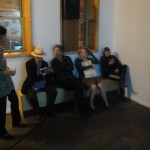
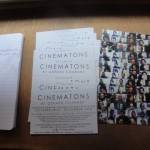

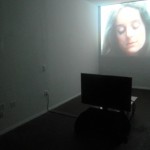
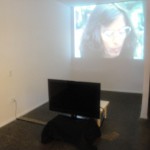
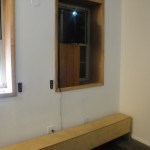
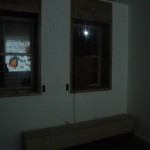
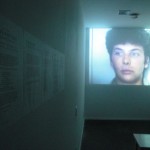
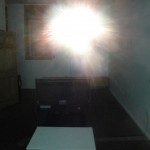


Writer and critic Dominique Noguez on Cinématons:
THE JIVARO OF OUR HEADS
It happened in 1978, in Paris, with Giscard ruling and the French Labour Party getting ready to lose the legislative elections; at the same time, across the oceans, the challenge between field-marshal Brejnev and Jimmy Carter was on. Strangely enough, the French experimental cinema was flourishing: it was about to rise from 0,0001% to 0,0002% of the global production. The valiant film-makers, promoters of this event, thirty or forty people in all, decided to found their own co-operative society. Films, ranging from three minutes to three hours in length, happened to be listed in the movie catalogues and the press paid attention to these works, writing a few lines on them every three months or so, on page twenty-five.
The newly founded co-operative settled into the first floor of an old grey house which estate agents had their eyes on. The address was number 42, Rue de l’Ouest. In that same building, not far from Martine Rousset, feminist film-maker, there also lived an ambitious and active young man from Dijon, Gérard Courant. Long haired and a movie critic, he had recently decided to become a producer.
So he wrote several works slightly shorter than their title (i.e. “Urgent ou à quoi bon exécuter des projets puisque le projet est en lui-même une jouissance suffisante”). He made a film of these in the Duchamp style, lasting one hour and thirty-seven minutes. I have since noticed his fondness for citing the names of celebrities in his titles, obviously (Marilyn, Guy Lux and the nuns), as well as in the soundtracks.
On 7th February 1978, with a 16 mm Beaulieu electric camera belonging to Martine Rousset, after using John Lennon, the Persian Shah or Idi Amin Dada as actors (without them knowing it), our young ‘swindler’ starts filming his concierge, a fifty-year-old lively, unrestrained, plumpy, mocking, real Parisian lady, dressed up in thousands of neckerchiefs.
This first issue of the so called ‘western film’ (the name deriving form the home address – Rue de l’Ouest) was followed by eight other works: three of them about young girls, the third nearly invisible due to light resolution; one featuring a young intellectual, with semi-long hair, wearing glasses, making wry faces before putting on a mountain hunter’s cap; one with an actress looking like Jeanne d’Arc, nearly as lively and vivid as Jeanne at the stake; then a bearded, long-haired person living in the years after 1968; someone else talking about a cinema critic, with small eye-glasses, who thought it very clever to leave the frame and then reappear, visibly very proud of his action; and, finally, a film with an Egyptian looking actress wearing sun glasses who appears unrolling the picture of a very young lady and an unidentified phallic object.
All these portraits, filmed with a 16 mm black and white camera, as well as the other six works which followed (shot with a Super 8 Colour camera), have a white wall background, which must certainly be one of the walls inside the apartment I was talking about. But portrait number 15, the one of a slender, smoking, spectacled character, has a different background and the ‘Cinématons’ – as they were titled – had apparently finally found their ideal scenario: the whole world. Or, to put it better, all the places on our planet where Gérard Courant dragged his gaiters and camera: in effect, wherever small or big film festivals took place.
As to their contents, they become lively very quickly. After what we said about Alcide Sudre, who wears a cap, or the author of these remarks who makes a yaw out of vision, Gabriel Chahine, from Lebanon, with moustaches and cigarette-holder (portrait number 20) is the first one on 15th June 1978, at approx. 11.32 a.m., to change without hesitation the actions into a ‘happening’ as he stands up suddenly and replaces his face with a triumphal pair of buttocks to tell us, with the typical language of silent film, that no doubt “his head is sick”.
Then comes Joseph Morder who proves, without leaving the frame, without even moving his head, just by hitting his lips with his tongue and by loosing his locks, that the face, by itself, is a battle-field – a field of signification – rich and with unlimited possibilities. He gives us the chance to discover again the enthusiastic proposals of Louis Delluc or Jean Epstein on the photogeny field. For example:
Monologue of a single face
All tragedies
Solely in the eyebrow arch
……………………………..
The foreground is the soul of the movie (1)
To all movie historians, especially to those dealing with experimental films, one should say, once and for all, that these portraits are not the first ones in cinema history: they could be considered as the first ones had Gérard Courant (who was born in Lyon – which is already a praiseworthy effort in the field), had Gérard Courant, I was saying, completed his works some eighty years before, or had he photographed his first pretty little face before the Lumière brothers could film their work “Goûter de bébé”. He should have anticipated great Sacha (Guitry) by filming, at the beginning of World War One, his family friends, Sarah, Anatole, Edgar, Auguste, Octave (2) and some others.
Had he been contemporary with us (what an excellent thing this would be), he should have been quicker than the French-Icelandic artist Errò, or than the Czecho-American artist Warhol; the former, in Paris, between 1962 and 1967, asked all the artists he knew (including the second one cited above) to make a grimace in front of his camera. The late François Dufrêne had started a striking phonetic-literary commentary on all the grimaces filmed in black and white. Warhol, instead, when he somehow indifferently turned to cinematic activity in 1963, installed a Bolex camera on a tripod in his Factory in New York.
There, his assistant, Billy Linich, “took pictures of the thousands of visitors to this paradise of narcissism; he asked everyone to sit in front of the Bolex to make their film-portrait (3)”. Out of the hundreds of said portraits, they extracted the 13 Most Beautiful Women (1964), the 13 Most Beautiful Boys (1965), and the 50 Fantastic & 50 Personalities (1965). To complete my report I should also mention another American artist, he too the son of immigrants, who started working on film-portraits in 1966. However, this individual – due to greediness or madness (or both) – summoned nearly everyone who has written about him to court. For this reason I shall not divulge his name (4).
When Courant started working, he knew, just like everyone else, about the portraits made by Warhol. But he slowly diverged from that style and changed his procedure on at least two points. First of all he soon left aside his “Factory” and pushed forward the so called Cinématonnés. “If you do not go towards Courant, Courant will come to you!” Secondly he amplified the idea of the series and went beyond the idea of a film lasting twenty-four hours – which after Fernand Léger (who kept dreaming about it) Warhol was interested in as well –planning to make a single projection of all these films, and the date set was 15th and 16th December 1967. From this point of view, now that Courant’s catalogue has exceeded the mille e tre, Don Giovanni-Courant can definitely say that he has kept, for a long time and without any doubt, the record once reached by Warhol’s followers and other artists.
It is now time to talk about theory. What is the principle of the Cinématon? It is a pact. It’s a pact with Mephistopheles, the seducer giving eternity, the fragile and pleasant eternity of Super 8, for three minutes of your life. It is a pact also because it implies a co-creation. Mephistopheles provides the camera, the light, the limits – spatial features: a foreground, at least at the start; as well as temporal conditions: the length of a spool, two hundred seconds approximately. And within these limits – to which one must add the film’s silence – it is then up to you to get out of trouble by providing the correct performance based on your own choice and handle the capital appendix which represents yourself, this synecdoche that could be a face (or a complete head or more if you turn round, if you move, or if, like Gabriel Chahine, Jakobois and his wife, you want to show other parts of your anatomy).
Like the photomatons, the Cinématons are therefore ‘assisted self-portraits’. But involving movement. And, as a consequence, the background changes. They are to photomatons- those automatic self-portraits obtained inside cabins which appeared in the sixties- as the Lumière films performed under the shining sun of the Midi Southern region of France are to the Edison films worked out in the tiny prison of Black Maria.
They are nothing but traps, even more dangerous for being self-managed. They can be compared to the current custom of asking authors to write the preface of their own books or their own obituary-notice. This habit often gives birth to interesting samples of self-gratification or nonsense from which it is easy to collect elements to draw up a wide treatise of narcissism.
Tell me how you want to appear to posterity – at least to the restricted posterity represented by the glass eye of the camera – and I’ll tell you who you are.
Actually, the Cinèmatons offer huge and precious material for experimental psychologists and, above all, to those who are keen on classification. As a matter of fact, even if one tries to reduce the number of these psycho-dramas, or better to say the number of these ‘prosopodramas’ (from ancient Greek “prosopon”, face), one realises very quickly that there are common tendencies, identical beliefs; in practice we have sufficient arguments to build up a passionate rhetoric of behaviour.
Hereinafter, a few hints and observations to assist those who will try to attend to the analysis of the above sprouting tale.
Taking into account the instructions given by Gérard Courant (that is: stay more than three minutes in front of the camera that will frame your face in a steady foreground – exception made for Cinématon number 30, when he handed over his camera to Babette Mangolte and the latter filmed Deke Dusinberre swinging the camera too much), the Cinématons subdivide themselves into different positions ranging from full acceptance of above instructions to total rejection of above instructions, going through subtle or blatant deviations. We note right away the relativity of this idea of “total” rejection of the instructions received. The only total refusal is the refusal of being a Cinématon (see below), as the existence of a Cinématon testifies to an agreement which includes refusal among simulacres and vanity.
We also note that the extremes meet and that the greatest acceptance (which consists in looking at the camera for a period of three minutes, just like looking at the photomaton glass to get an I.D. photo) reaches the greatest objection (which consists in denying with disdain the presence of a camera, pretending to be reading – Oh, Godard! – or to sleep – Oh, Douchet! ) through the same facial impassiveness, the same minimalism, the same zero degree of performance.
The above extremes oppose the great number of intermediary cases, in which the Cinématon plays the game but wants to add something of his own. The Cinématon becomes a pretext to act, at times in a reasonable way, at times in a riotous way. Between the initial position and the final position, rowdy or sophisticated events may occur. Among the former, one can count the struggle of Noël Godin, in a highly comical atmosphere, against all sorts of culinary objects (number 214). Among the latter, Frédérick Mitterand with tears in his eyes, probably still under the weight of the drama which his wonderful “Lettres d’amour en Somalie” exorcises- or simply because he is affected with a common flu (number 291).
After selecting one of the above positions, the person can either keep his choice till the end of his experience, or he can change his mind spontaneously (and while he looked docile during the first phase, suddenly react spitefully), or, finally, he can change his mind involuntarily (due to some external unforeseen event).
The two can go side by side, like in the beautiful Raymonde Carasco’s portrait (number 32); she had assumed a tender and grave expression and wanted to stick to it till the end. However, a comedian, passing by out of vision, turned this expression into a sweet smile (that was above Hyères, in the ancient villa of the Noailles where Man Ray filmed Mystères du chateau de Dé; it was the 7th of September 1978 at 14.33 and I was among the farce actors…).
Another parameter is represented by the communication between the Cinématons and the external world. Some of them only address the ‘Cinématonneur’ (they talk to him, they smile at him, they ask him questions) but some others address the public to be. Some of them address both. To say nothing of those (Nordon or Jakobois) who, wanting to address people, refuse loneliness and draw walk-on personalities into the frame, prefiguring Gérard Courant’s serial Couples. But one must not trust appearances.Those who seem wisely willing to undergo present and future attention are either looking towards themselves or towards empty spaces; those who pretend to be sleepy or indifferent, care a lot about their aspect and are worried about the attention of the whole world.
Now let’s return to the ups and downs of the portraits that make of them an adventure or at times a farce, light, heavy or thriller-like. That can depend on the sitting positions, glances, movements, actions, make-up, accessories. Position: how does one’s face expose to the camera, frontally (generally) or in profile? Staying foregrounded or turning away (like the one of Daniel Viguier) or moving out of vision (and how many times, my child?)? Glances: Serge Merlin and his eye winking in all senses. Movements: the face only – turning left or right from 1 to 360°, making grimaces, shutting and opening eyes and mouth, tongue out (isn’t it, Deke Dusinberre?), or licking the lips indecently (isn’t it, Joseph Morder?) – or showing hands grabbing, hiding, adjusting hair, playing with accessories, making a gesture (“Hello!” “Ssshhh!”). Actions: these range from the daily actions (eating, drinking, smoking) to the undiscloseable ones (isn’t that so, Jakobois?). Make-up: one should also add “masking”, the former being a particularity of the latter. Accessories: cigarettes, cigars, glasses (at times black: Oh, Bordier!), ‘sonotone’, vampire teeth (Oh, Lethen!), mirrors, cards to write on it, hats, clothes, food in general, powder or masks.
In fact, the big issue in such an exhibition of faces, is the mask. Those who wear one are less hypocritical (etymologically). Actually, grimaces, cigarette smoke, fans, hands, are all masks to protect the most naked and the most vulnerable of us from inquisition. What am I saying? From the nuclear bombing of other people’s glances. As if Sartre’s famous analysis could find here clear confirmation and the subject exposing himself, even in the differed confrontation at the screening, cannot have any doubt about how objective others’ gazes can be. The less clever, in this work of pathetic escape, are not those who offer their open face. They know there’s no better protection than the first degree (it is the Devil who says “I’m a Devil” and no one believes it). Maybe the trend of ontological suspense in many of these portraits stems from this.
Even in those cases where “nothing happens”, there is always something to observe. Warhol proved it recently with his eight hour view of the Empire State Building: the most impassible view, abandoned to the invisible river of time, still changes ten times every second. Even if one does little or nothing when exposing skin, hair, vitreous humours, and even if one transforms oneself into a psychologist, or painter, cartographer, or gardener, the calm map of features, the eyelashes, the presence of red spots, the cataclysm of a falling lock , the ocean in the eyes, the dawn of a smile, offer endless delights. It is time to remind ourselves that these films are movies, made for the wider screens, for instance that of the Cinéthéque Française at Chaillot, and not for our tiny television screen (5).
That’s why Cinématons are a mine of information, allowing numberless statistics – which even Courant refers to (6) with pleasure and minutely – and at the same time they can furnish the most “sharp” typologies. In their Manichean way – with smokers and non-smokers, hairy and bald, gloomy or cheerful, restless or phlegmatic, taciturn or talkative, black or white, filmed from inside or from outside – they are all schools of tolerance. Because whoever dares look at different faces, with some attention and for the duration of three consecutive minutes, cannot be and cannot remain a racist or a misanthrope.
We have seen how this string of film has started. How will it end? Maybe it will never end, not if Gérard Courant will have any heirs. In that case, we shall witness the birth of a new human institution. Cinématons would loose their noble amicable side, their arbitrary and perhaps, we could say, exclusive side, that was their former unavoidable attribute to become an actual right of human beings, what we could call the democratic mirror of mankind. This fact would increase the number, so far limited, of classified refractory parties (Louis Skorecki, Michel Ciment,Unglee, Patrice Lelorain, Eric Rohm).
These glorious eccentric persons who do not want to mix up their bobbins (in both senses) with that (to pick just one) of Dominique Païni (number 100) or that of Diego Risquez (number 200), or that of Patrick poivre d’Arvor (number 600) or that of Alain Paucard (number 700), or even that of Gérard Courant (number 1000), find some kind of statistical compensation in those sometimes also glorious and eccentric persons who have gone through it three or four times, even five times, like for instance young Galaxie Barbouth, who keeps the austere record of the recidivous ones. Usually, these duplicates ar made in different periods of their lives . With one exception: dreamer Marie Rivière, filmed in Berlin on 20th February 1982, at 11.00 and at 11.10 (which indicates a little less than seven minutes break); she has the most enchanting little finger.
In parantheses, by their introductory note, as precise as a Swiss clock, Cinématons have opened – have we been informed? – the most detailed and heedless among intimate magazines. How could we ignore, after that, that Gérard Courant was in Locarno on 6th August 1980 (12h57), in Paris on 30th November 1981 (18h30), in Bordeaux on 14th November 1984 (14h15), or in London on 21st December 1985 (21h30)? Careless or tricky? As this astonishing precision seems very much like the creation of alibis, slowly one starts thinking that, maybe, with a thousand unintentional accomplices, our friend has been setting up, over the past ten years, a perfect crime.
Back to Multicinématonists. Obviously they are urged more than others to invent grimaces, tricks or previously unseen sketches in order not to repeat themselves; they have of course more chances to be listed on the most original Cinématons’ secret roll of honour. A roll which becomes harder and harder to join. The more the history of Cinématons develops, the fewer the chances to innovate within it become. Nevertheless, to those who in future will have the honour of being filmed, we wish to suggest some new ideas that we failed to use for lack of occasions:
THE CINÉAQUATON
The featured Cinématon, head upside down, plunged into an aquarium with small red fishes.
THE INVISIBLE CINÉMATON
The face wrapped in bandages like a mummy. Take off the bandages. When the operation is over, one discovers that there’s nothing underneath.
Finally, the nail, rare, to be carried out preferably on the anniversary of 9 Thermidor:
THE CINEGHILLOTIN
The featured Cinématon puts his head inside one of the orifices of the tools invented by good Doctor Guillotin, put into storage after May 1981. Action! Ciak! Cut!
Use the electric potato crusher, the atomic bomb, La Mariée mise à nu par ses célibataires, même, the cinema without images and the orange without seeds- the Cinématons are, as seems obvious, one the biggest inventions of the 20th Century. Let’s praise to eternity their founder and braid another crown of well deserved periphrases: greetings to you, Oh Nadar of the Super 8, Oh great organizer of our pumps, not yet funeral, Oh Saint Simon of films belonging to this end of century, Oh Jivaro of our heads!
Jean Epstein, Bonjour cinéma (Paris, ed. la Sirène, 1921), pp. 67-94.
Bernhardt, France, Degas, Rodin or Renoir, Mirbeau.
Stephen Koch, Hyperstar : Andy Warhol, son monde et ses films, translation: Nicole Tisserand (Paris, Chêne, 1974) pp. 22-23.
This refers to Gregory Markopoulos, who then died in Switzerland (1999). may the God of Cinema take care of his soul s God of the movie
Even if they can be found as videocassette, like many experimental films.
See: Gérard Courant, Cinématon – Le film le plus long de l’histoire du cinéma, Henry Veyrier, 1989, «Index and Statistics», pp. 201-224.
(Dominique Noguez, Cinématon de Gérard Courant, éditions Veyrier, 1989, reprinted in Éloge du cinéma expérimental by Dominique Noguez, Paris Expérimental, first edition 1978, Third edition, october 2010)
